We’re not quite sure it lives up to Logitech’s “World’s most advanced keyboard” claim, but if you’re looking to cut a stylish dash at your desktop, then you won’t find many keyboards as likely to impress as the Logitech diNovo Edge.
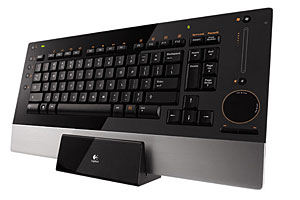
Looking like a slab of shiny machinery that’s been teleported off a sci-fi set, the diNovo is a beautifully designed, Bluetooth-powered slice of sleek, superslick black and silver.
We tested the keyboard last year and seeing as we’re still using it daily, we thought we’d update the review and also add a long term verdict at the end.
Construction
Created from a single-cut piece of seam-free Plexiglas nestling in an aluminum frame, the diNovo simply looks stunning. Or ‘lush’ as we say in Wales.
Logitech’s premier design philosophy also filters through to the neat charging/storage dock, which clears up desktop clutter by holding the keyboard vertically.
The company claim that users can expect two months battery life on a single charge, with just a five minute boost giving a full days use out of the keyboard.
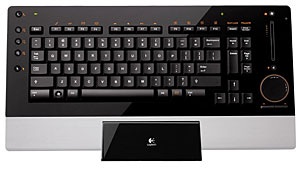
With its bright and reflective piano-black finish, the keyboard is something of a fingerprint and smudge magnet, but Logitech have thoughtful included a micro fibre polishing cloth to keep your grubby mitts from spoiling the dazzling finish. Expect to use it often.
Keyboard layout
Measuring just 16 inches long by half an inch wide, there’s been some compromises to get the keyboard this small, the most obvious being the disappearance of the number pad.
While this may be nothing short of disastrous for accountants, number crunchers and mathematicians, we think it’s a small sacrifice for the swish looks.
There’s been some squishing on the keyboard layout too, with the F keys and some function keys being a little smaller than usual.
We didn’t experience any typing problems although it may not be the best keyboard for fat-fingered key slammers.
To the far left of the keyboard are five buttons for sleep mode, zoom in/out, 100 percent zoom button and left-click.
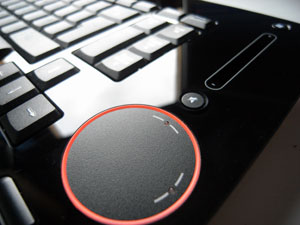
To the right of the keyboard is Logitech’s ‘TouchDisc’ which offers vertical and horizontal scrolling by moving your finger in a circular pattern across the pad.
With two small buttons below duplicating left and right mouse clicks and support for ‘tap’ clicking, you could easily replace your mouse with the keyboard.
Installing
The diNovo comes with its own Bluetooth EDR 2.0 USB mini receiver in case your desktop/laptop lacks Bluetooth, and installation should be a fairly straightforward process of plugging in the receiver, turning on the keyboard and installing the SetPoint software (annoyingly, this required a reboot).
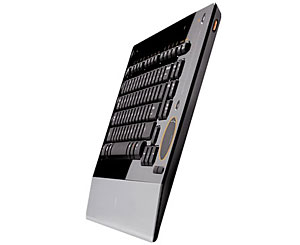
Unfortunately, it turned out to be a troublesome process for us, perhaps because we already had the LX700 keyboard installed on our machine.
After some swapping about with the Logitech Bluetooth receiver and the one we already had installed, we got everything working – but only with both receivers installed (after trawling through Logitech’s site we eventually found this: ‘The diNovo Edge USB Bluetooth receiver will not pair or connect to other Bluetooth enabled devices.’ Doh!).
For a high end product, we found the documentation rather Spartan – despite the enormous, product dwarfing box, there was only a fold out instruction pamphlet to be found inside.

Behold! Let the light show begin!
Once we started using the keyboard, we quickly forgave its installation quirks, and marvelled at the space age glowing lightshow on our desktop.
Pressing the function (Fn) button gets the Blackpool style illuminations underway, with a hidden row of icons above the row of F keys magically appearing out of the blackness before fading away seconds later.
Used with the F keys, the Fn button adds 14 different functions, all of them customisable (via the included SetPoint software) apart from the four multimedia controls, covering F5 to F8.
The circular TouchDisc also gets in on the futuristic act, glowing orange around its circumference when touched, with the light then gently fading away, like a Romulan cloaking device being activated in deep space.
We liked the volume control best of all, with sound levels adjusted by running your finger along a sleek black vertical strip, with two orange lights following your finger up and down. Star Trek fans will note the similarity with Geordi LaForge‘s visor and will probably get as much fun out of playing with the thing as us.
 Using the keyboard
Using the keyboard
Of course, not even the greatest light show on earth will save a keyboard from being rubbish if it feels awful to use, but the diNovo didn’t disappoint our digits and turned out to be a real gem to use.
The keys have just a slight click as they are depressed (so a late night essay writing session deadline won’t sound like Keith Moon’s moved in next door) and there’s none of that horrible sponginess that afflicts some keyboards.
The Logitech’s low profile makes for a very comfortable typing position and the ‘feel’ of the keyboard is just right – certainly the best we’ve ever used.
Conclusion
It’s pretty hard to justify £100 for a keyboard – after all, a £10 wired job can do just about everything this can – so it seems pointless basing our conclusion on a value for money basis, even if the solid charging base and bundled Bluetooth adapter go some way to justifying the high price.
What you get with the diNovo is a beautiful slab of state-of-the-art, futuristic Tron bling which will enhance your desktop, make typing more enjoyable and quite probably give you the urge to bark out “Make it so!” at regular intervals.
The slim, compact, low profile keyboard is a joy to type on, the multimedia transport keys and function controls work well and there’s even a usable mouse substitute thrown in.
It’s the best keyboard we’ve ever used. Especially in the dark.
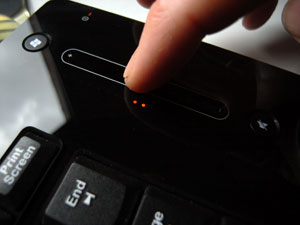
Long term verdict:
After nearly a year of intensive use, we can report that the diNovo has held up pretty well, despite being subjected to long days of heavy typing and some thundering late night drunken key slammings.
The keyboard is still holding up its charge very well, and with a brief shake to remove the traces of chocolate hobnobs and a polish with the supplied cloth, looks almost new.
Well, we say ‘new’ but there’s certainly been some signs of wear and tear on the keys themselves, with some of the letters fading away under the daily clattering onslaught.
The letters ‘a,’ ‘e,’ ‘i’ and ‘o’ are now barely recognisable, with the letter ‘l’ being reduced to just the tiniest scrape of paint.
Still, we think we know where the letters are after all this time, so it’s only a minor inconvenience, and it hasn’t changed our verdict on the diNovo: if you can afford to splash out around a hundred quid for a keyboard, well, go on and spoil yourself!
Our verdict
Looks: 90%
Ease of use: 84%
Bling factor: 90%
Appeal to Star Trek fans: 95%
Build: 80%
Value for money: 70%
Overall: 85%
Buy it from Amazon.
System Requirements
Windows XP (SP2) or Windows Vista (all editions)
Available USB port
CD-ROM Drive
Hardware
Keyframe
Full-sized standard 18 X 18 mm keys, 3.2 mm key travel, 60g activation force
10M keystroke supported per key
Scissor switch technology
Plexiglas panel with brushed aluminum palm rest
Technical Specifications
Enhanced Control
38 mm circular Touchpad with horizontal and vertical scrolling
Acceleration settings goes from None to 10 times the scrolling speed
TouchDisk can be disabled with FN + Left Click on the keyboard
17 one-touch access controls with instant backlit feedback
57 mm touch sensitive volume slider with instant backlit feedback
Connectivity
Bluetooth Wireless Technology, version 2.0
Power and Battery
Built-in rechargeable 950 mAH lithium ion battery
Fast-charge time: About 5 min for approx. one day usage
Full-charge time: About 2 hours for up to 2 months usage
Dimensions and Weight
11 mm (h) X 410 mm (W) X 210 mm (d)
940 grams
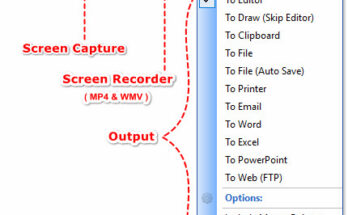

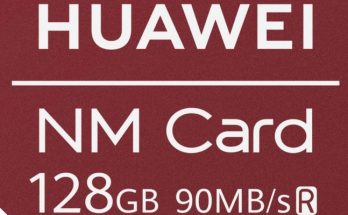
That is a lovely looking keyboard which makes my current one look rubbish.
A hundred quid is a lot of money for a keyboard though.